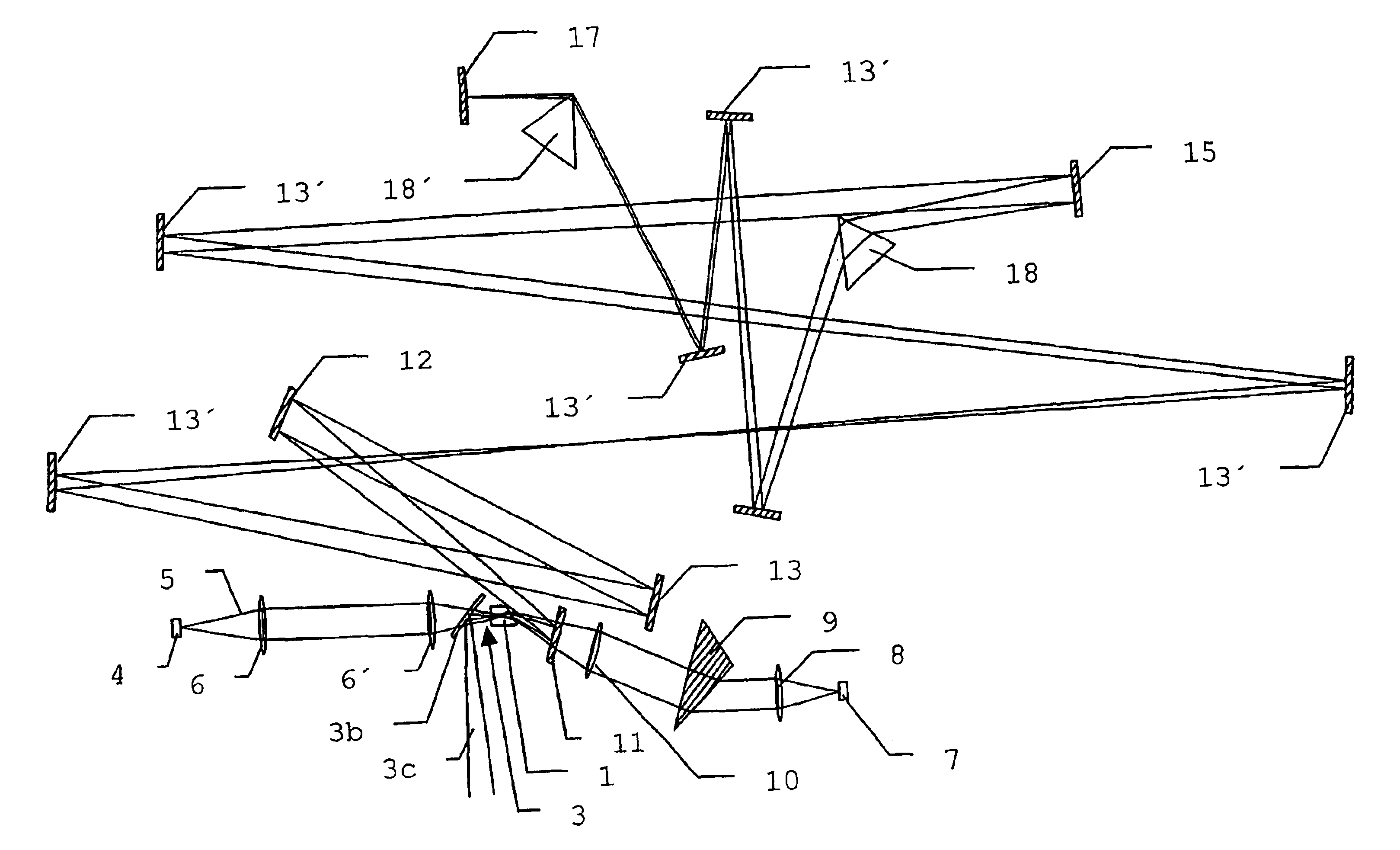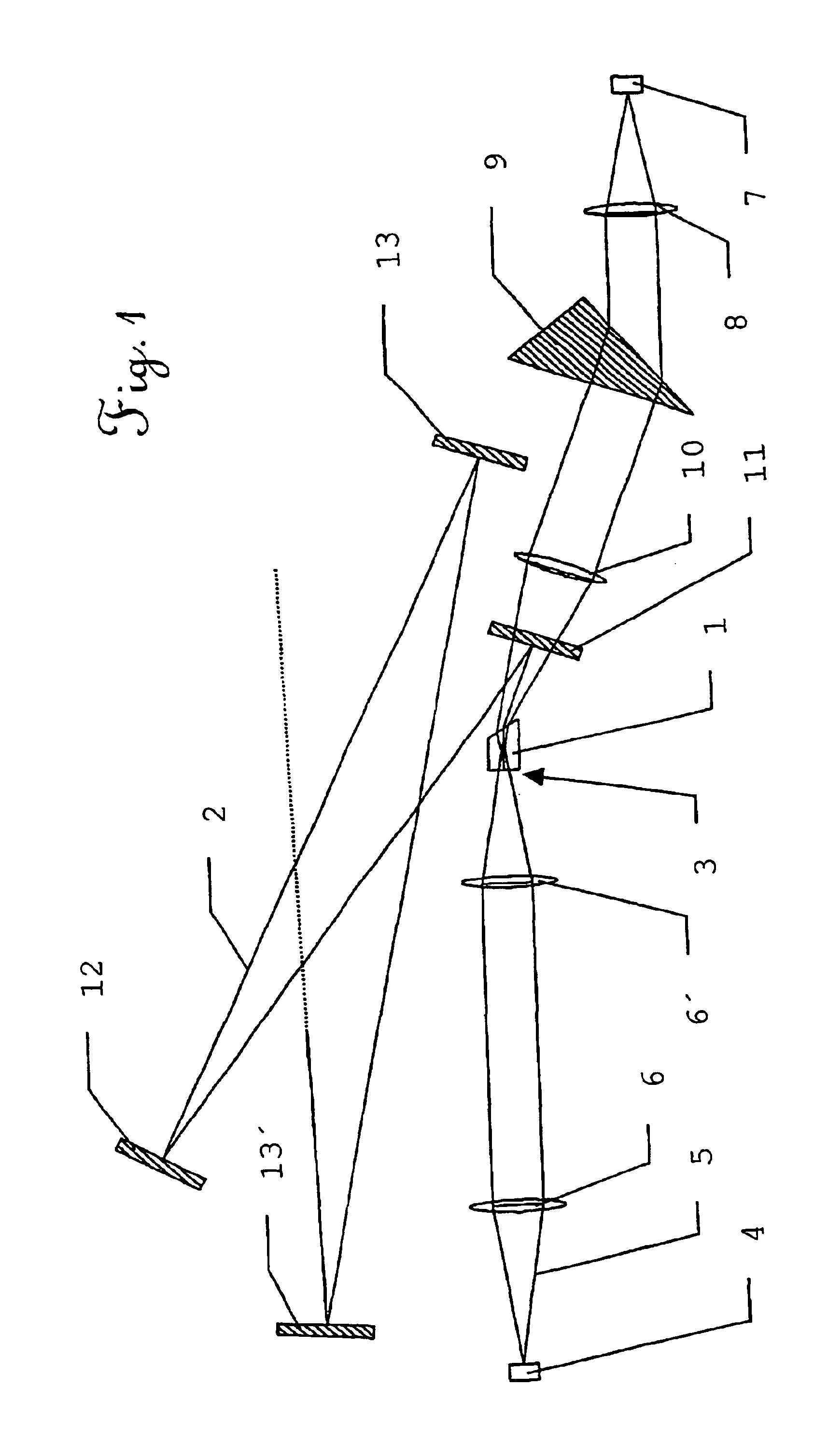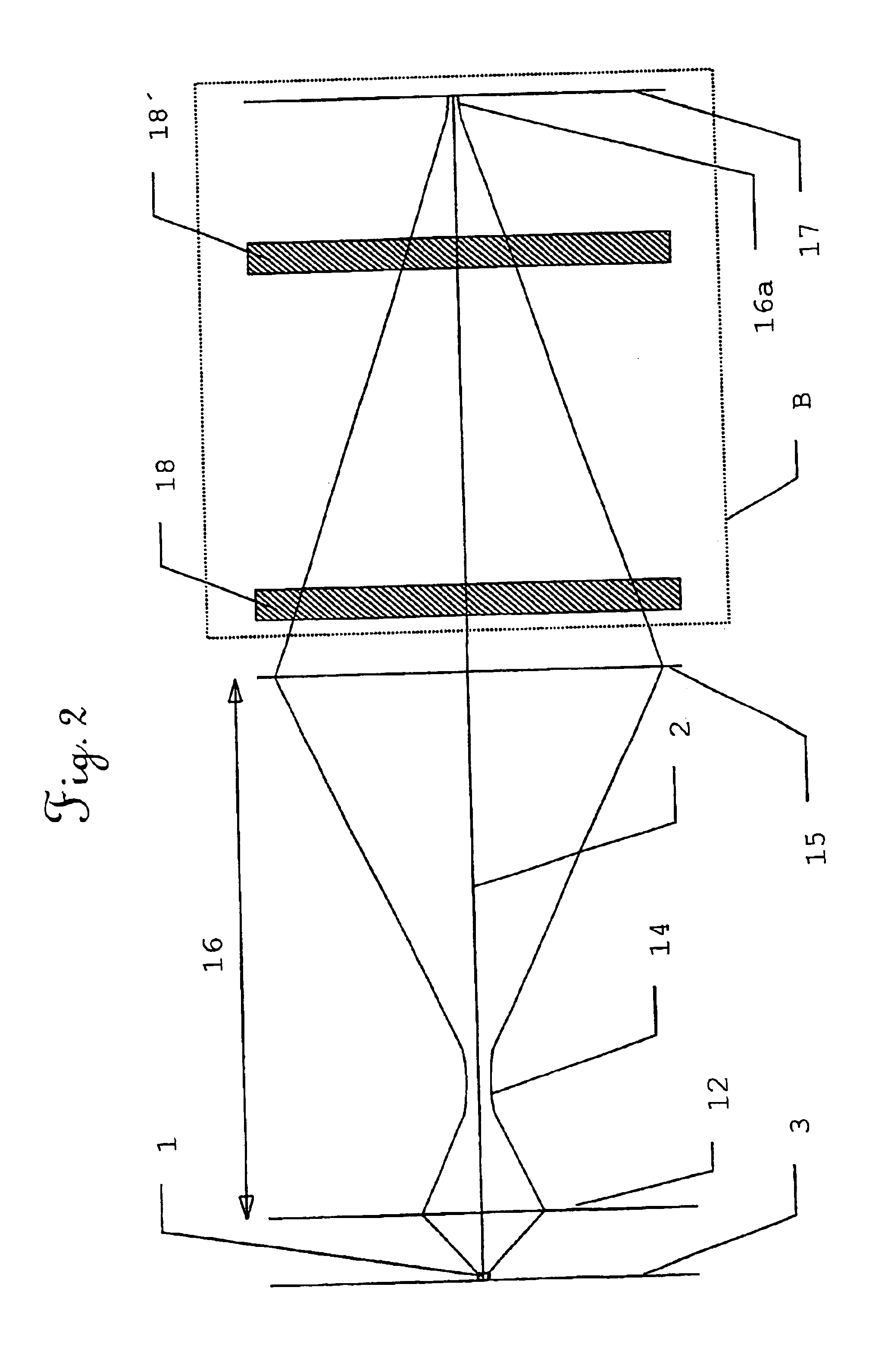Compact ultra fast laser
a laser and ultra-fast technology, applied in the field of compact solid-state lasers, can solve the problems of increasing the complexity of the system, limiting the number of laser materials suitable for femtosecond generation, and complicated femtosecond lasers, etc., and achieve the effect of reasonable gain
- Summary
- Abstract
- Description
- Claims
- Application Information
AI Technical Summary
Benefits of technology
Problems solved by technology
Method used
Image
Examples
Embodiment Construction
[0015]The general setup of a compact, ultra-fast laser according to a preferred embodiment of the invention shall be described with reference to FIG. 1. The gain section of the laser setup comprises a laser gain medium 1 which is located in the vicinity of a first end of a laser cavity (see laser cavity mode axis 2). The laser gain medium 1 can even be the laser cavity end itself if one side 3 of the laser material is coated for reflectivity at the laser wavelength. A flat-Brewster-cut laser medium may be used, where the flat side is coated for reflectivity at the laser wavelength and for high transmission at the wavelength of the pump laser diode 4 used in the setup. The laser diode beam is preferably collimated in the (vertical) fast-divergent axis by means of a cylindrical micro lens attached close to the laser diode 4 so that the pump beam 5 diverges at a reduced vertical divergence angle. The pump laser diode 4 can be for example a 100 micron wide laser diode emitting at a powe...
PUM
 Login to View More
Login to View More Abstract
Description
Claims
Application Information
 Login to View More
Login to View More - R&D
- Intellectual Property
- Life Sciences
- Materials
- Tech Scout
- Unparalleled Data Quality
- Higher Quality Content
- 60% Fewer Hallucinations
Browse by: Latest US Patents, China's latest patents, Technical Efficacy Thesaurus, Application Domain, Technology Topic, Popular Technical Reports.
© 2025 PatSnap. All rights reserved.Legal|Privacy policy|Modern Slavery Act Transparency Statement|Sitemap|About US| Contact US: help@patsnap.com



